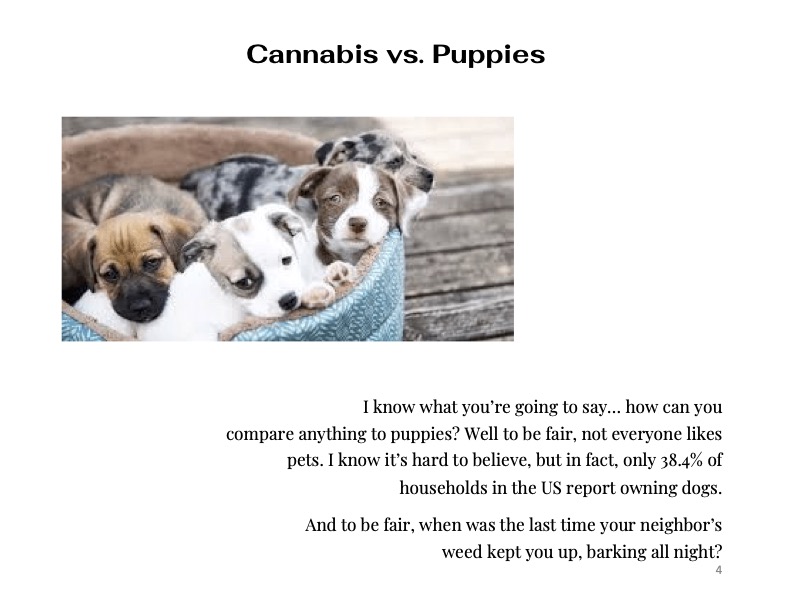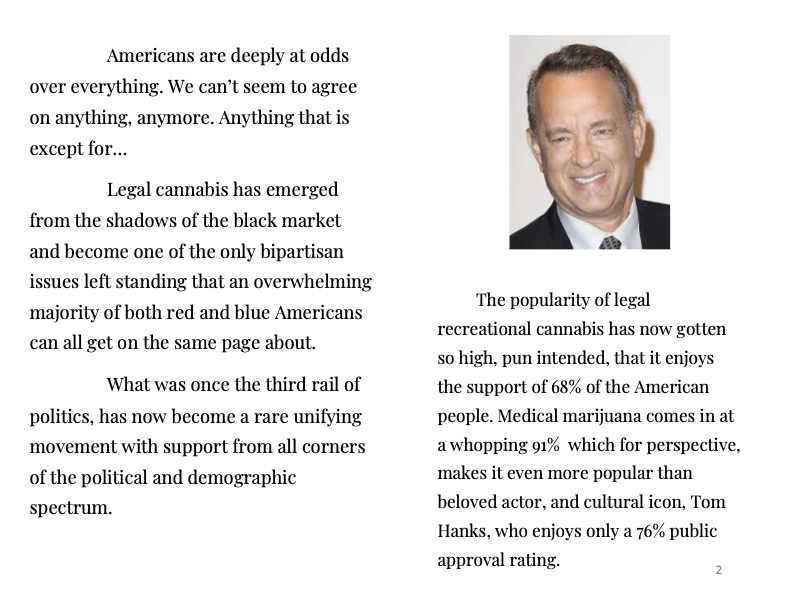3. Genetics

(A sea of clones, ready for transplant in 2015, in Quincy, WA.)
I’m one of those people you hate because of genetics.
-Brad Pitt Tweet
When I first started smoking cannabis as a kid, we only had one kind of pot available. It was called ‘pot’. It was brown, full of seeds, didn’t smell particularly good, and came mashed together in cubes.
Eventually I heard rumors of some famous strains like ‘Purple Haze’, ‘Skunk’, and ‘Acapulco Gold’, but these were nothing more than fairy tales.
Even if we were somehow lucky enough to have a mythical strain like ‘Maui Wowie’ wind up in my ziplock bag, how would I even know it?
There were no strain identity labels on the packaging. No one sold pot to me by strain, my choices were organized only by price point.
An eighth of schwag cost $20-$30, midi’s were $35-$45, and kind bud was $50-$60 for an eighth.
Those were dark days indeed! Luckily, we now live in the Golden Age of cannabis genetics. The sophistication level of cultivators and the collective genetic database have never been greater and continue to expand at a rapid clip.
There are a historic number of resources being dedicated to cultivating different varieties of cannabis all over the world right now.
Think about the amount of time, money, and care that goes into indoor cannabis cultivation and imagine for a second that it was for broccoli or tomatoes. Can you picture how amazing, albeit ridiculously overpriced, that broccoli would be?
Sourcing Genetics

While you can eventually propagate your own genetics, you will need to look to an outside source to start your first harvest canopy. The good news is there are many great sources of start-up genetics available to cultivators in the cannabis industry through vendors in your local markets.
The blood of the martyrs is the seed of the church.
-Tertullian Tweet
Starting from seeds comes with high risk and reward. One challenge with starting from seeds, is that like Forrest Gump’s box of chocolates, and life at large, by extension, “you never know what you’re going to get”.
Your best hope is to work with a good vendor that has properly stabilized and sexed their seeds. You can read online reviews or get referrals from industry contacts to find a high-quality supplier.
Another challenge is getting your seeds to properly germinate, through the right combination of temperature, lighting, and moisture.
Much like the strange conditions that it used to take for my ex-wife to be in a good mood, your seeds can be finicky, high maintenance, and difficult to read, as you search for the right combination of factors that will satisfy their endlessly changing needs.
The flipside of these obstacles is that there are many advantages that starting from seed has, including possibly the most upside for ‘monster producers’.
For a Sungrown crop especially, plants that are grown from seeds could be heartier, more resistant to mold, pests, and weather, while developing taller and wider and producing more flowers. At the same time, clones taken from a strong mother grown in that environment, could be sure fire winners.
Additionally, with a large enough additional investment into the infrastructure required to properly grow from seeds, with patience and persistence, you may be able to propagate your own genetics or create new designer strains.
Clones

We've had cloning in the South for years. It's called cousins.
-Robin Williams Tweet
While clones may lack some of the upside of seeds depending on their source, they are a safer bet, and a more turnkey product. If you don’t have your own set of mother’s and your market allows you to buy clones, go through a good cloning supplier. They will give you proven strains with high yields, high resistance, and a low failure rate.
A downside of sourcing clones is that you are at the whims of market forces beyond your control. If something happens with your supplier you might not be able to find the same strain or phenotype again, making it more challenging to ensure product consistency.
Clones can additionally also be expensive when compared to starting from seeds.
Tissue Culture

Preservation of one's own culture does not require contempt or disrespect for other cultures.
-Cesar Chavez Tweet
Tissue culture cultivation is the most advanced and arguably the ultimate and best way to produce consistent, high quality, and top performing cannabis genetics.
In tissue culture labs, plant botanists take samples that have been harvested from the best individual plants and then cultivate exact genetic replicas in a growing medium.
This differs from taking a clone or ‘cutting’ in that there is a loss of genetic purity and consistency that occurs over the course of subsequent generations of clone cuttings. This is very similar to what happens over time when you allow people from the South to marry their cousins.
With a tissue culture lab, there is no generational degradation because you are always making a copy from a pure, original sample. It’s like ‘scobey’ or for those of you who aren’t familiar, it’s that disgusting, self-reproducing slime, in a revolting looking glass jar sitting on the kitchen counter at your naturopath friend’s house, that somehow is supposed to qualify as a beverage intended for human consumption.
So grab your tie-dyed lab coats and kick on the air exchange. With the infrastructure required for this set up, you’ll be at the cutting edge of cannabis cultivation science!
The main disadvantages of tissue culture cultivation are practical in nature. It is much more expensive as it requires far more infrastructure- i.e., a functioning laboratory- and a higher level of training and operational sophistication.
So, WTF is a Filial Line?

It is indeed a desirable thing to be well-descended, but the glory belongs to our ancestors.
-Plutarch Tweet
Filial lines are generations in cross breeding. The word is derived from the Latin word filia, meaning, “daughter”. If your filial line is ‘early’ it will not yet have been stabilized, meaning each batch of clones might contain a wild variability of different traits and characteristics. When you’re growing for a business, you want to ensure as much product consistency as possible, both from a production and customer focused point of view. You want the seeds or clones that you’re using to perform as advertised.
To prevent mother nature from interfering with her pesky pechance for diversity of life, you need to know whether your genetics have been stabilized to represent the cultivar characteristics that you’re looking for in your first batch of plants. This is indicated by it’s F#. An F1 genetic has only crossed-bred once. This one will have the least amount of uniformity. For instance, if you had 10 cuttings of an F1 Blue Dream strain, then it’s likely that only 1 or 2 of the 10 plants would wind up with that unmistakable Blue Dream aroma. As a breeder crosses each generation of offspring, the further down the line they progress from F1 to F10, for instance.
To keep a lid on this variation problem, they keep crossing the best plants which have the most desired features through many more generations. Again, this is the filial line. you canSome of the most well-known designer cannabis cultivars, like DJ Shorts Blueberry were an F8 or even higher!
You have to start somewhere, and most of the time you can’t start from an F10 or even an F2 for some of the strains that you’re looking for. In this case if there’s a strain that you’re dying to have and it’s only available as an early filial line, then it’s time to get out your camo coveralls and a case of domestic beer, because you need to go on a…
Pheno-Hunt

Going to war without France is like going hunting without an accordion.
-Norman Schwarzkopf Tweet
Well just what the hell is a pheno-hunt, you might be wondering, and for that matter why should I fall for this again, I already spent hours one day looking for snipes, only to come up empty handed and feeling like a rube?
Troy thinks that everyone who took middle school biology, has probably learned about the Punnett Square, while I personally think that Troy is giving the majority of us, far too much credit for having paid attention in middle school. The Punnett Square though, as I’ve recently come to learn, is a table that shows how different peas can be crossed to show varying characteristics based on the dominant and recessive genes in the pea matrix. Apparently, this is not the same pee matrix which is found in a public swimming pool.
The purpose of your phenotype search is to find the cuttings or seeds from a cultivar that best exhibits the expressed genotype or the features and characteristics you are looking for from that strain.
You will basically have to grow your F1 or F2 generation up, tracking their lifecycle, growth habits, and other relevant data post-harvest, including drying, curing and other markers of quality. You do this in order to discover which features you want to reproduce and which plants to cross breed.
What Type of Ammunition Should I Use?

You probably don't need more weapons than what's required to destroy every city on earth. There's only 2,300 cities. So, the United States, by that criteria, only needs 2,300 nuclear weapons - well, we've got more than 25,000!
-Carl Sagan Tweet
While throwing knives or ninja stars are a possible, albeit ill-advised option, your weapon of choice for this conquest should be a good set of sterile knives. An Exacto-Knife or a scalpel are even more precise and great tools to have handy in case you have to perform an underground, amateur surgery on yourself or others. By the way, crazy glue is also helpful for this.
We warn you in other parts of this book that you should never take anything for granted in the cannabis industry, even that your employees would know the SOP for putting on their own pants.
“No shoes come after pants, you idiot!”
One thing you definitely don’t want to do, is to put an entire season into sourcing the right phenotypes and then mess it all up at the last minute, just because you or somebody that works for you, forgot to label or improperly labeled your plants. Just saying…
Key Chapter Takeaways
The Do’s and Don’ts of the Dope Industry
- Do– Some research to figure out if you want to start from seed or clone
- Do– Put in the time to source plants with stabilized filial lines
- Do– Identify the phenotypes and characteristics you’re looking for in each strain
- Don’t– Start with any old strains, do the research to find the right ones
- Don’t– Don’t start from seed or out of tissue culture if you don’t have the right facility and equipment
- Don’t– Don’t start with an early generation strain if it can be avoided
